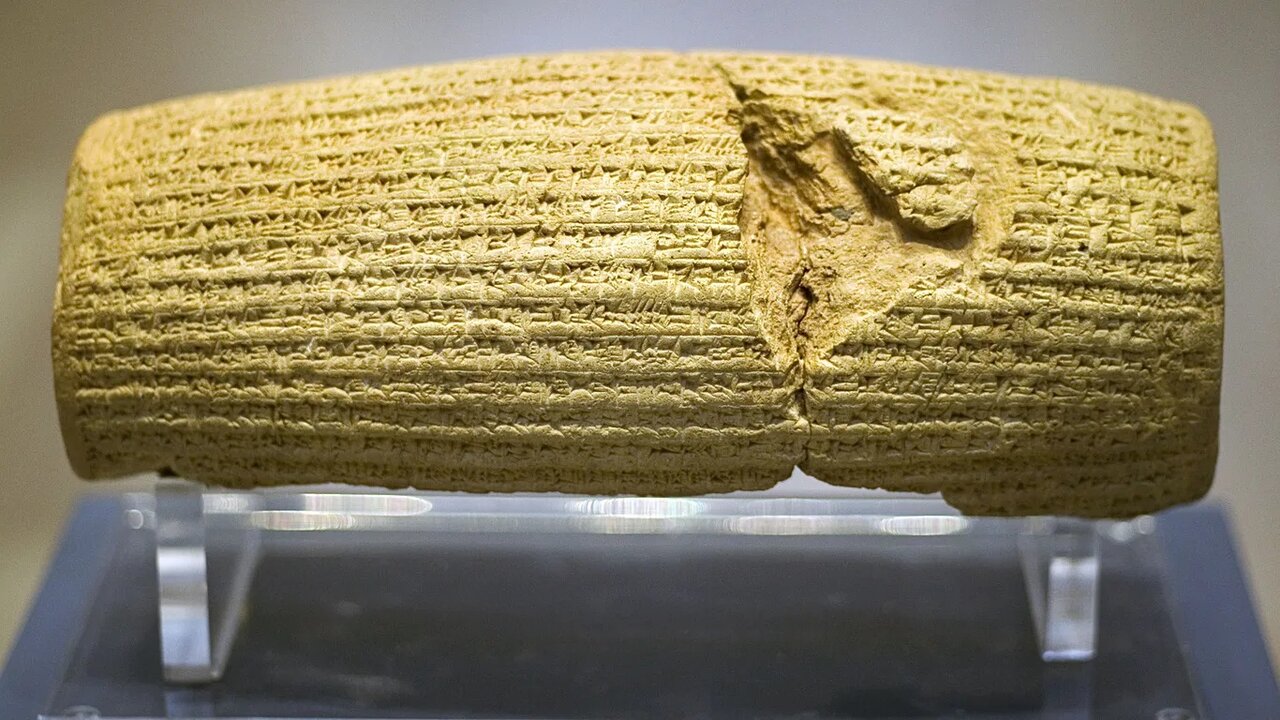UNESCO recognizes Cyrus Cylinder as one of world’s earliest human rights charters

TEHRAN - UNESCO’s General Conference on Thursday adopted a resolution recognizing the Cyrus Cylinder as one of the world’s earliest declarations promoting cultural diversity and human rights.
The resolution, titled “Cyrus Cylinder: An Early Charter of Human Rights and Cultural Diversity,” was jointly proposed by Iran and Tajikistan and approved by a majority of member states at the 43rd session of the UNESCO General Conference held in Samarkand.
As highlighted by UN cultural body, the recognition aims to strengthen intercultural dialogue, promote shared human heritage, and support the organization’s programs related to justice, human rights, non-discrimination, and cultural tolerance.
Egypt, Iraq, Colombia, India, Nigeria, Algeria, Pakistan, Bangladesh, Kenya, Senegal, Armenia, and Poland were among the countries voting in favor of the resolution.
The resolution encourages UNESCO member states to raise public awareness of the Cyrus Cylinder, translate its text into various languages for educational purposes, and use its values to promote peace and cultural coexistence.
It marks the first time an ancient Iranian artifact has been formally recognized at the global level as a document associated with the origins of human rights.
The Cyrus Cylinder, a small clay tablet measuring about 23 centimeters in length and 11 centimeters in width, is inscribed in Akkadian cuneiform and housed in the British Museum. It dates back to around 539 BCE, when Cyrus the Great, the founder of the Achaemenid Empire, captured Babylon in present-day Iraq.
The inscription describes how Cyrus defeated Babylon’s king Nabonidus with the favor of the god Marduk and subsequently allowed religious freedom in the city. It records that Cyrus returned displaced peoples to their homelands and restored their temples and deities.
One passage reads: “I commanded that all sanctuaries which had been closed should be opened. I brought back to their places all the gods of these sanctuaries. I gathered all their people and returned them to their dwellings.”
The cylinder remained buried for more than 2,400 years until it was discovered in 1879 by British archaeologist Hormuzd Rassam during excavations in Mesopotamia.
The Cyrus Cylinder, an ancient clay artifact inscribed in Akkadian cuneiform, dates from the 6th century BC. It records the conquest of Babylon by Cyrus the Great in 539 BC and his restoration of religious sanctuaries and displaced peoples. The object was discovered in 1879 in the ruins of Babylon, in present-day Iraq, and is being kept in the British Museum.
The cylinder gained renewed attention in the late 1960s when Iran’s last Shah of Iran described it as the “world’s first charter of human rights.”
Cyrus the Great (born c. 590–580 BC, Media, or Persis [now in Iran]—died c. 529, Asia) was a conqueror who founded the Achaemenian empire, centered on Persia and comprising the Near East from the Aegean Sea eastward to the Indus River. He is also remembered in the Cyrus legend—first recorded by Xenophon, Greek soldier and author, in his Cyropaedia—as a tolerant and ideal monarch who was called the father of his people by the ancient Persians. In the Bible, he is the liberator of the Jews who were captive in Babylonia. In the Bible, Cyrus is famous for freeing the Jewish captives in Babylonia and allowing them to return to their homeland. He conciliated local populations by supporting local customs and even sacrificing to local deities. The capture of Babylon delivered not only Mesopotamia into the hands of Cyrus but also Syria and Palestine, which had been conquered previously by the Babylonians.
AM
Leave a Comment